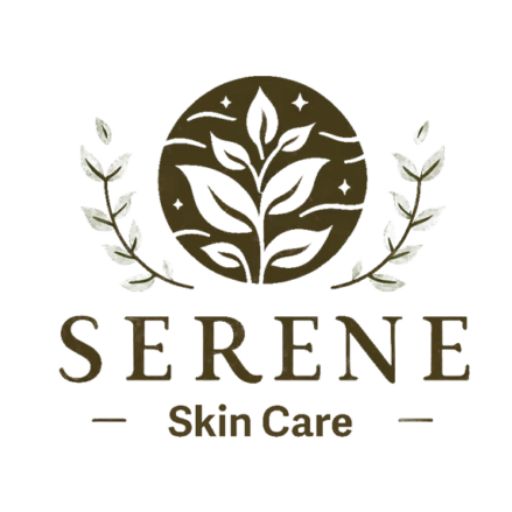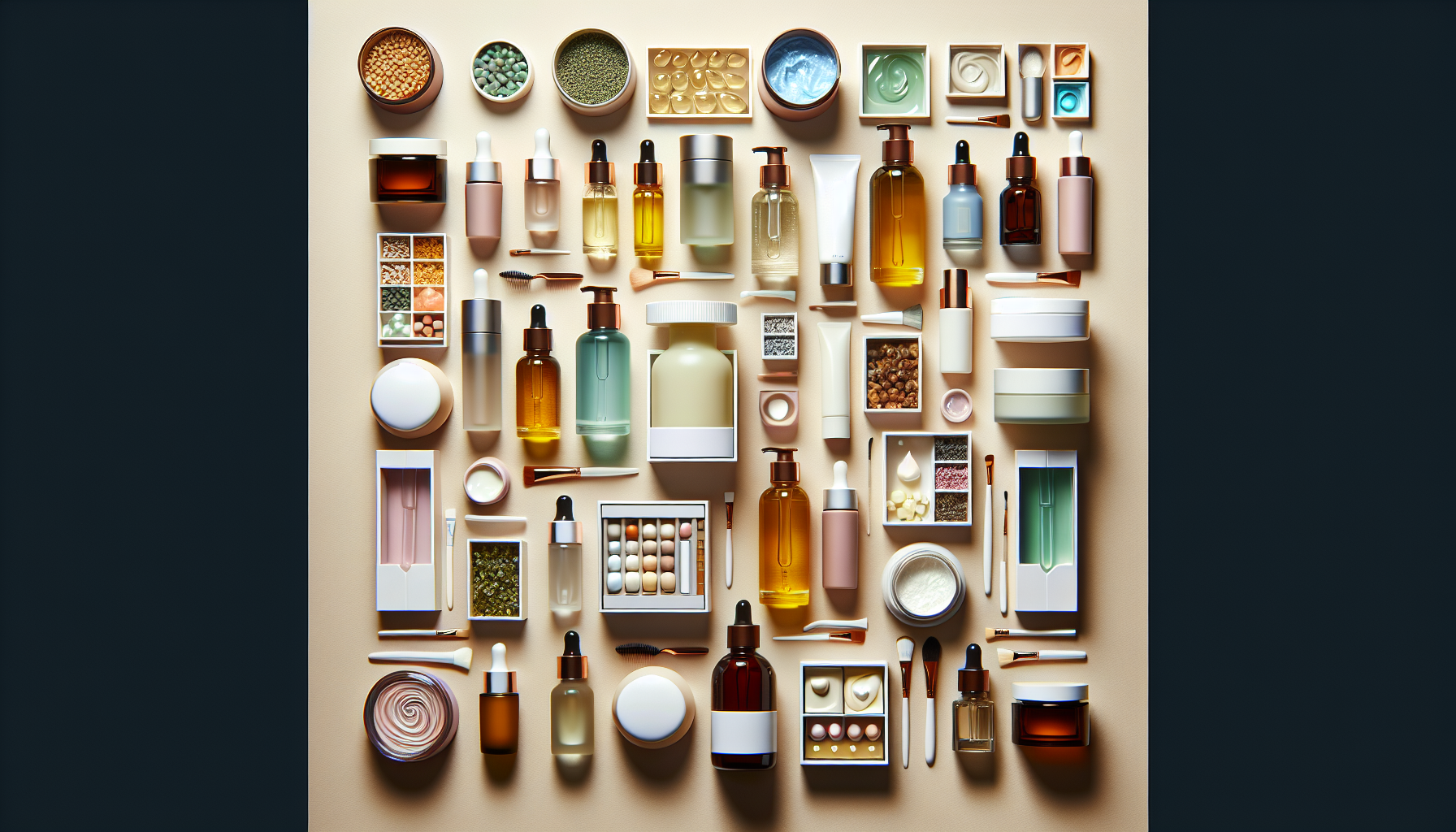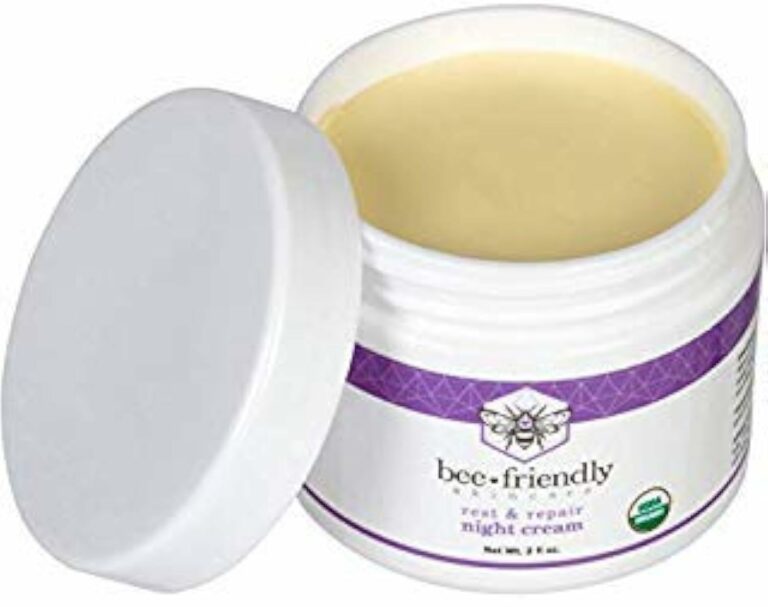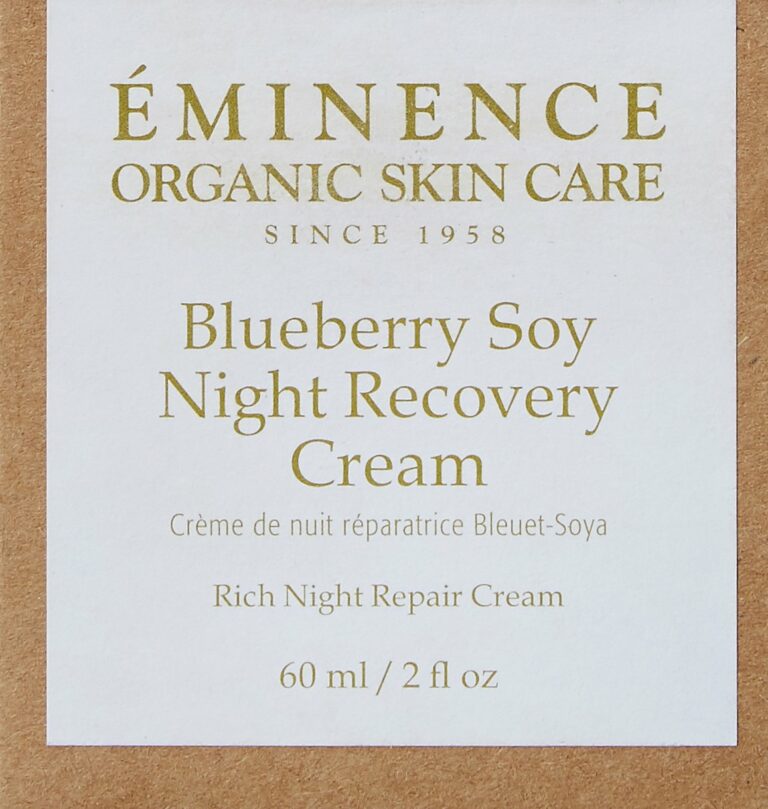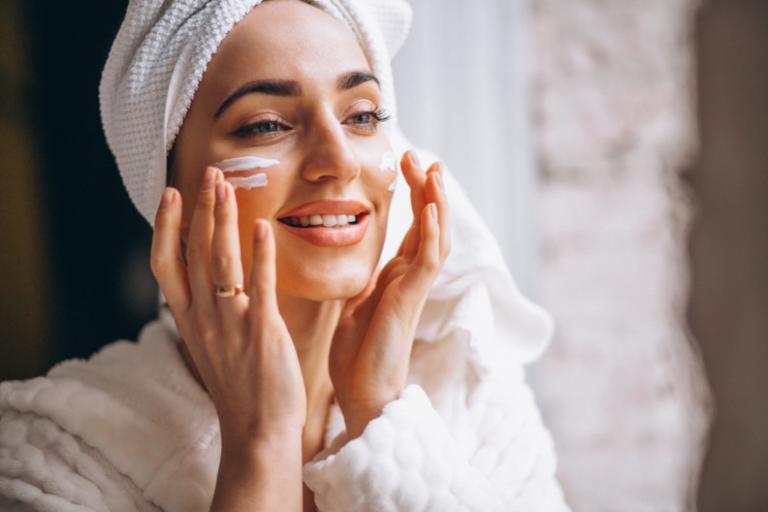In this article, the focus is on the art of advanced layering in skincare routines. With an increasing array of products available, it can be overwhelming to understand which ones to use and in what order. However, by following some simple guidelines, one can effectively maximize the benefits of each product and create a skincare routine that truly works. From serums to oils, this article dives into the science behind layering and provides practical tips for achieving a healthy and radiant complexion. Whether you are a skincare enthusiast or a beginner, this article is sure to provide valuable insights into the world of advanced layering.
Choosing the Right Skincare Products
When it comes to taking care of your skin, one of the first and most important steps is choosing the right skincare products. With a multitude of options available in the market, it can be overwhelming to figure out which ones are best suited for your skin.
Understanding Your Skin Type
Before diving into the world of skincare products, it is essential to understand your skin type. There are typically four main categories: oily, dry, combination, and sensitive. Knowing your skin type will help you select products that address your specific needs and concerns. For instance, if you have oily skin, you may want to focus on oil-free or mattifying formulas to control shine.
Identifying Your Skin Concerns
Apart from knowing your skin type, identifying your specific skin concerns is crucial in choosing the right skincare products. Whether it’s acne-prone skin, dryness, fine lines, or hyperpigmentation, each concern requires targeted ingredients. By determining your skin concerns, you can narrow down the product options that are designed to combat those issues effectively.
Researching Product Ingredients
Once you have a clear understanding of your skin type and concerns, it’s time to delve into the world of product ingredients. Researching the ingredients contained in skincare products can help you make informed decisions. Look for ingredients that are known to benefit your skin type and concerns. For example, hyaluronic acid is excellent for hydrating dry skin, while salicylic acid is known for its ability to exfoliate and treat acne.
Consulting with a Dermatologist
While doing your own research is beneficial, consulting with a dermatologist is highly recommended, especially if you have specific skin concerns or sensitivities. A dermatologist can provide personalized recommendations based on your skin’s unique needs and guide you towards effective products. They may also have access to prescription-based products that can target more severe skin conditions.
Creating a Skincare Routine
Now that you have chosen the right skincare products, it’s time to establish a skincare routine that suits your needs. A consistent and tailored skincare routine can work wonders for the overall health and appearance of your skin.
Cleansing Your Skin
The first step in any skincare routine is cleansing. This is important to remove dirt, oil, and impurities that accumulate on your skin throughout the day. Choose a cleanser that is gentle and suits your skin type. Massage the cleanser into your skin using circular motions, and rinse off with lukewarm water. Cleansing should be done twice a day, in the morning and evening.
Toning Your Skin
After cleansing, toning your skin helps restore its pH balance and prepare it for further product absorption. Toners also help remove any residue left behind after cleansing. Opt for an alcohol-free toner that suits your skin type. Apply it to your skin using a cotton pad or your clean hands, gently patting it onto your face.
Applying Serums
Serums are concentrated formulations that target specific skin concerns. They are packed with active ingredients that penetrate deeply into the skin. Choose serums that address your concerns, whether it’s brightening, hydrating, or anti-aging. Apply a few drops onto your fingertips, and gently pat them onto your skin. Allow the serum to fully absorb before proceeding to the next step.
Moisturizing Your Skin
Moisturizing is an essential step in any skincare routine, regardless of your skin type. It helps hydrate and nourish the skin, maintaining its moisture barrier. Select a moisturizer that is suitable for your skin type and concerns. Apply it onto your face and neck, gently massaging it in upward motions. Don’t forget to include the delicate skin around your eyes by using a separate eye cream.
Applying Sunscreen
Sunscreen is a crucial step in any skincare routine, as it protects your skin from harmful UV rays. Choose a broad-spectrum sunscreen with a high SPF and apply it generously all over your face and exposed areas of your body. Remember to reapply every few hours, especially if you are spending time outdoors.
Understanding Skincare Product Order
Aside from choosing the right skincare products, understanding the correct order of application is key to maximizing their effectiveness. Applying products in the wrong order can hinder their absorption and reduce their overall benefits.
Cleansers
Cleansers should always be the first step in your skincare routine. Start by washing your face with lukewarm water, then use your chosen cleanser to remove all traces of dirt and impurities.
Exfoliants
Exfoliants should be used after cleansing, but not on a daily basis. They work by removing dead skin cells and promoting cell turnover. Follow the instructions on the exfoliant product and use it as directed.
Toners
After cleansing and exfoliating, toners can help balance the skin’s pH levels and enhance the absorption of subsequent products. Apply toner using a cotton pad or your fingertips, and gently pat it onto your face.
Essences
Essences are lightweight, watery formulas that add an extra layer of hydration to your skin. These can be used after toners to provide further nourishment and prep the skin for serums and moisturizers.
Serums and Ampoules
Serums and ampoules contain highly concentrated active ingredients that target specific skin concerns. Apply a few drops of your chosen serum or ampoule onto your fingertips and gently pat it onto your skin.
Eye Creams
Eye creams are designed specifically for the delicate skin around the eyes. Use a small amount of eye cream and pat it gently onto the skin with your ring finger.
Moisturizers
Moisturizers seal in moisture and provide hydration to the skin. Choose a moisturizer suitable for your skin type and apply it in upward motions, focusing on your face and neck.
Facial Oils
Facial oils can be used after moisturizers to lock in hydration and provide additional nourishment. Apply a few drops of facial oil onto your fingertips, warm it up between your hands, and gently press it onto your skin.
Sunscreen
Sunscreen should always be the last step in your skincare routine, as it serves as a protective barrier against UV damage. Apply sunscreen generously and remember to reapply throughout the day, especially if you’re exposed to the sun.
Prepping Your Skin for Layering
Effective skin layering starts with prepping your skin properly. This involves a few essential steps to ensure that each product can penetrate and deliver optimal results.
Cleansing and Double Cleansing
Properly cleansing your skin is vital before layering any products. Double cleansing, a popular technique, involves using an oil-based cleanser followed by a water-based cleanser. The oil-based cleanser removes makeup, excess sebum, and pollutants, while the water-based cleanser cleanses the skin further.
Using Exfoliants
Exfoliating your skin once or twice a week helps remove dead skin cells, allowing subsequent products to penetrate more effectively. Choose a gentle exfoliant and massage it onto damp skin in circular motions. Rinse thoroughly and pat dry.
Applying Toner
After cleansing, apply toner to remove any remaining impurities and balance the skin’s pH levels. Use a cotton pad or your clean hands to apply the toner, gently patting it onto your face.
Hydrating with Essences
Essences, lightweight and hydrating formulations, can be used to prepare your skin for layering. Apply a few drops onto your fingertips and gently press them onto your skin. This will help your skin absorb subsequent products more effectively.
Layering Skincare Products Effectively
Layering skincare products effectively is essential for achieving optimal results and addressing specific skin concerns. Here are some tips to help you layer your products in the most efficient way possible.
Starting with Lightweight Products
Begin your layering routine with lightweight products, such as toners and essences, and gradually move on to thicker, heavier formulations. This allows each product to be fully absorbed before applying the next layer.
Applying Products from Thinnest to Thickest
When layering your products, always follow the rule of applying them from thinnest to thickest consistency. This ensures that each product can penetrate the skin effectively. Start with watery toners, move on to serums, and finish with moisturizers and facial oils.
Allowing Each Product to Absorb
Give each product ample time to absorb into the skin before moving on to the next layer. This typically takes a few minutes, but it can vary depending on the product. Patting the products onto your skin rather than rubbing will help with absorption.
Targeting Specific Areas of Concern
If you have specific areas of concern, such as fine lines or hyperpigmentation, consider applying targeted treatments directly to those areas. This can be done after applying serums but before moisturizers.
Using the Patted Layering Technique
A popular technique for layering skincare products is the patted layering technique. Instead of rubbing the products onto your skin, patting them gently with your fingertips can help with absorption and prevent unnecessary friction.
Avoiding Common Layering Mistakes
While layering skincare products can bring tremendous benefits to your skin, it’s vital to avoid common mistakes that can hinder their efficacy.
Overloading Your Skin
One of the most common mistakes is overloading the skin with too many products. Layering too many products at once can overwhelm the skin and lead to irritation or breakouts. Stick to a few targeted products that address your specific concerns.
Mixing Incompatible Ingredients
Not all skincare ingredients play well together. Mixing incompatible ingredients can lead to unwanted reactions or even render the products ineffective. It’s crucial to do thorough research or consult a professional to ensure compatibility.
Ignoring Product Shelf Life
Skincare products have a shelf life, and using expired products can have adverse effects on your skin. Pay attention to the expiration dates and avoid using products that are past their prime.
Not Patch Testing New Products
Introducing new skincare products without patch testing them can be risky. Patch testing involves applying a small amount of the product on a small area of your skin to check for any adverse reactions. This step can help you identify potential allergies or sensitivities before applying the product to your entire face.
Understanding Active Ingredients
Active ingredients are powerful components that deliver specific benefits to the skin. Understanding these ingredients can help you choose products that target your concerns effectively.
Retinols and Retinoids
Retinols and retinoids are derivatives of vitamin A that promote cell turnover, boost collagen production, and improve the appearance of fine lines and wrinkles. They are highly effective for anti-aging purposes but can cause sensitivity. Start with a low concentration and gradually increase to prevent irritation.
Vitamin C
Vitamin C is a potent antioxidant that brightens the skin, fades hyperpigmentation, and protects against environmental damage. Look for stable forms of vitamin C, such as ascorbic acid or magnesium ascorbyl phosphate, for maximum efficacy.
Hyaluronic Acid
Hyaluronic acid is a powerful humectant that attracts and retains moisture in the skin. It provides deep hydration, plumps the skin, and helps reduce the appearance of fine lines and wrinkles. It is suitable for all skin types, including dry and sensitive skin.
Peptides
Peptides are small protein fragments that promote collagen synthesis, improving the skin’s elasticity and firmness. They can help minimize the appearance of wrinkles and fine lines, making them a valuable ingredient in anti-aging products.
Niacinamide
Niacinamide, also known as vitamin B3, is a versatile ingredient that helps regulate sebum production, improve skin texture, and fade hyperpigmentation. It is well-tolerated by most skin types and can be used daily.
AHAs and BHAs
AHAs (alpha hydroxy acids) and BHAs (beta hydroxy acids) are exfoliating ingredients that help remove dead skin cells, revealing smoother and brighter skin. AHAs, such as glycolic acid, are water-soluble and are ideal for dry or aging skin. BHAs, like salicylic acid, are oil-soluble and work well for acne-prone skin.
Targeting Specific Skin Concerns
Different skin concerns require specific approaches and ingredients to address them effectively. Here are some common skin concerns and how to target them.
Acne-Prone Skin
For acne-prone skin, look for products that contain ingredients like salicylic acid, benzoyl peroxide, or tea tree oil. These ingredients help unclog pores, reduce inflammation, and kill acne-causing bacteria.
Dry or Dehydrated Skin
Dry or dehydrated skin requires products that provide deep hydration and moisture. Look for ingredients like hyaluronic acid, ceramides, and oils that can replenish moisture levels and strengthen the skin barrier.
Aging or Wrinkled Skin
To address aging or wrinkled skin, opt for products that stimulate collagen production and improve elasticity. Ingredients like retinols, peptides, and antioxidants can help reduce the appearance of fine lines and wrinkles.
Hyperpigmentation
Hyperpigmentation can be treated with ingredients like vitamin C, niacinamide, and specific acids like kojic acid or azelaic acid. These ingredients work to lighten dark spots and even out skin tone.
Sensitive Skin
For sensitive skin, focus on gentle, fragrance-free products that won’t irritate or exacerbate sensitivity. Look for ingredients like chamomile, aloe vera, or oatmeal, known for their soothing properties.
Uneven Skin Texture
To improve uneven skin texture, exfoliating ingredients like AHAs, BHAs, or retinoids can be effective. Regular exfoliation helps remove dead skin cells and promotes a smoother, more even complexion.
Understanding Product Interactions
Understanding how skincare products interact with each other is essential for getting the most out of your routine. Here are a few key points to consider.
Benefits of Layering
Layering products allows you to target multiple concerns simultaneously and enhances the overall effectiveness of your skincare routine. By combining the right ingredients, you can address various skin issues and achieve optimal results.
Avoiding Ingredient Conflicts
Certain ingredients can interact negatively with one another, leading to product inefficacy or skin irritation. For example, combining retinoids and AHAs can cause increased sensitivity and irritation. Research product compatibility or consult a dermatologist if you’re unsure about ingredient interactions.
Enhancing Product Efficacy
Layering specific ingredients can enhance their efficacy. For example, applying a hyaluronic acid serum before a moisturizer can help lock in hydration and provide a plumping effect. Understanding the benefits of each ingredient can help you make intentional choices for layering.
Understanding pH Levels
Some skincare products work best at specific pH levels. For example, AHAs are most effective at a pH level below 4. Applying products in the right order can help maintain the optimal pH levels for each product to work as intended.
Combining Active Ingredients
Combining compatible active ingredients can provide enhanced results. For example, using vitamin C and niacinamide together can boost collagen production and fade hyperpigmentation. However, not all ingredients can be combined, so it’s important to do thorough research or seek professional advice.
Listening to Your Skin
As with any skincare routine, it’s important to listen to your skin and make adjustments when necessary. Pay attention to how your skin reacts to different products and adjust your routine accordingly.
Monitoring Skin Reactions
Observe how your skin reacts to new products or changes in your routine. Look for signs of irritation, redness, or breakouts. If you notice any adverse reactions, discontinue the product and consult a dermatologist if necessary.
Adapting Skincare Routine
As your skin changes with factors like weather, hormones, or aging, it may be necessary to adapt your skincare routine. Notice any changes in your skin’s needs or concerns and adjust your product selection or layering technique accordingly.
Adjusting Product Layering
If you find that your current layering technique is not giving you optimal results, don’t be afraid to experiment and make adjustments. Everyone’s skin is unique, so what works for someone else may not work for you. Don’t be afraid to try different layering orders or change the products you’re using.
Seeking Professional Advice
If you’re unsure about any aspect of your skincare routine or have specific concerns, it’s always beneficial to seek professional advice. A dermatologist can provide personalized recommendations, address your concerns, and guide you towards an effective skincare routine tailored to your needs.
In conclusion, advanced layering of skincare products requires careful consideration of your skin type, concerns, and the ingredients in the products you choose. By understanding the correct order of application and paying attention to how your skin reacts, you can create a skincare routine that maximizes the benefits of each product. Remember to consult with a dermatologist, especially if you have specific concerns or sensitivities. With the right knowledge and a tailored skincare routine, you can achieve healthy, glowing skin.
